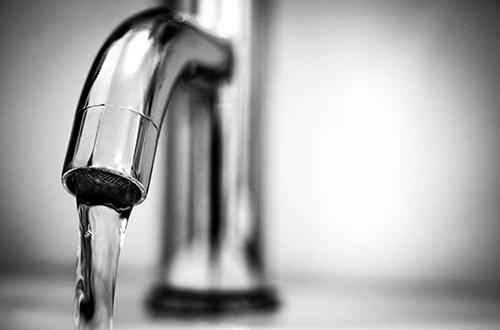
According to the Connecticut Department of Health (DPH), approximately 15% of Connecticut’s population rely on private wells as their source of drinking water. Private well owners are responsible for the quality of their own drinking water. Because a clean source of drinking water is critical to your health, the DPH recommends testing your well water once a year for routine analysis and after any work is done on your well, pump or piping. The recommended tests, (total coliform bacteria, nitrate, pH, sodium, turbidity, and color) are all covered in Basic Profile- Bacteria Physical/Chemical test.
The Basic Profile Water Test analyzes the following bacteria and physical/chemical properties:
Coliform Bacteria are not disease-producing organisms themselves, but they are used as an indicator of disease-producing organisms. When coliform bacteria are present, there is an increased probability that the source water may have been contaminated by surface water or fecal material and may also contain disease-producing organisms. Chlorination is the best method for eliminating bacteria from the water, but if possible, the source of contamination should be located and treated so the problem does not recur.
For healthy people, the Sodium content of water is relatively unimportant because the intake of sodium from other drinks and foods is so much greater. People following a low sodium diet because of hypertension, kidney, or cardiovascular disease should be concerned with an elevated level of sodium. The usual low sodium diet allows 20 mg/L in the drinking water. Elevated sodium levels are likely to be seen with the use of a water softener. Other possible causes are run-off from road salting or sewage contamination.
An elevated Nitrate Nitrogen level may be an indication that agricultural fertilizer or waste disposal is polluting the water. The AL of 10 mg/L has been established to prevent a disease called methemoglobinemia “blue baby disease” in infants. Reverse osmosis and ion exchange resins can remove nitrates.
Odor in water can be caused by foreign matter such as organic compounds, inorganic salts or dissolved gases. These materials may come from domestic, agricultural or natural sources. The action level (AL) has been set according to aesthetic values but acceptable waters should be free of any objectionable odor.
Manganese at levels greater than .05 mg/L may produce brownish black stains in laundry and on fixtures and impart an objectionable odor and taste. It is usually found along with iron in soil with a high mineral content. Oxidation followed by a greensand filter is a common method of manganese removal.
Water Color may be caused by dissolved organic material from decaying vegetation and/or certain inorganic material such as iron or manganese. While color is generally not a problem from a health standpoint, its presence is aesthetically unpleasing and suggests that the water may need appropriate treatment.
The AL for Chloride was established primarily as an aesthetic standard. The concentration at which the average person can detect a salty taste in water is 250 mg/L. A very high chloride level can lead to the corrosiveness of water on pipes and heating equipment and is usually associated with a high sodium level. Sewage contamination, run-off from road salting or an improperly maintained water softener may cause elevated chloride.
Turbidity is the presence of suspended material such as clay, silt, plankton, finely divided organic material and other inorganic materials. Turbidity in excess of five units are detectable in a glass of water and are usually objectionable for aesthetic reasons. The most common method of lowering turbidity is with a filter system.
Sulfate in drinking water has no beneficial effects. The desirable limit is 250 mg/L. At higher concentrations sulfate may have a laxative effect and cause taste deterioration.
pH is a measure of the acid or alkaline content of water. Water with a low pH (acidic) is corrosive to plumbing and may cause leaching of toxic metals such as lead or copper. Soda ash can be added to the feed water to effectively raise the pH.
Iron levels above 0.3 mg/L can discolor fixtures and laundry and may impart a metallic taste to the water. Iron is frequently present in water because of the large amounts present in soil. Corrosive water will also pick up iron from pipes. Common methods for removing iron from the water are aeration or chlorination of the water followed by filtration.
Calcium and Magnesium salts are the major cause of Hardness in water supplies. Although not detrimental to health, hard water retards the cleaning action of soaps and detergents. When hard water is heated it will deposit a hard scale on heating coils and cooking utensils with a consequent waste of fuel. A water softening system is the most common method of lowering the hardness in water. The following is a scale on which to compare your water hardness: (0-75) low/soft; (76-150) moderate; (151-250) hard; (over 250) very hard.
Sources: CT DPH, Aquatek and EnviroTech Labs